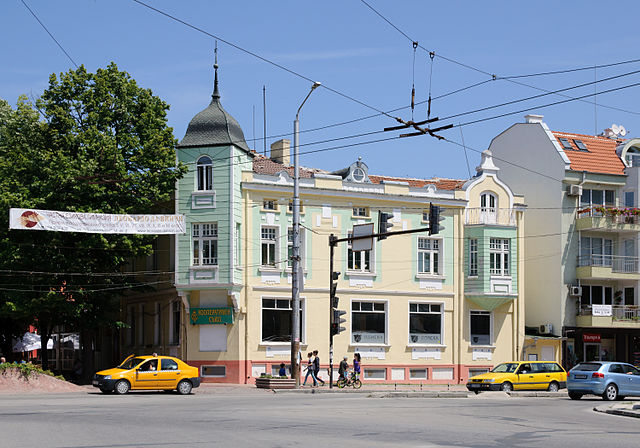
| DOBRUJA
Dobruja (dark green) within Romania and Bulgaria (light green) both in Eastern Europe
Coat of arms of the Romanian Dobruja Dobruja or Dobrudja (romanized: Dobrudzha or Dobrudža; Romanian: Dobrogea), is a historical region in the Balkans that has been divided since the 19th century between the territories of Bulgaria and Romania. It is situated between the lower Danube River and the Black Sea, and includes the Danube Delta, Romanian coast, and the northernmost part of the Bulgarian coast. The territory of Dobruja is made up of Northern Dobruja, which is part of Romania, and Southern Dobruja, which is part of Bulgaria.
The territory of the Romanian region Dobrogea is organised as the counties of Constanta and Tulcea, with a combined area of 15,500 km2 (6,011 sq. miles) and a population of slightly less than 900,000. Its main cities are Constanta, Tulcea, Medgidia and Mangalia. Dobrogea is represented by dolphins in the coat of arms of Romania.
The Bulgarian region Dobrudzha is divided among the administrative regions of Dobrich and Silistra; the following villages of Razgrad Province: Konevo, Rainino, Terter and Madrevo; and the village General Kantardzhievo (Varna). This section has a total area of 7,565 km2, with a combined population of some 310,000 people, the main towns being Dobrich and Silistra (regional seats).
Geography :
Geographical map of Dobruja
Woods and agricultural land in the Northern Dobruja Plateau
Steppe and agricultural land in the Central Dobruja Plateau
Rocky shores characteristic for the Southern Dobrujan coast With the exception of the Danube Delta, a marshy region located in its northeastern corner, Dobruja is hilly, with an average altitude of about 200–300 metres. The highest point is the Tutuiatu (Greci) Peak in the Macin Mountains, having a height of 467 m. The Dobruja Plateau covers most of the Romanian part of Dobruja. The Ludogorie Plateau is found in Bulgaria. Lake Razelm is one of the most important lakes in Northern Dobruja.
Dobruja lies in the temperate continental climatic area; the local climate is determined by the influx of oceanic air from the northwest and northeast and continental air from the East European Plain. Dobruja's relatively level terrain and its bare location facilitate the influx of humid, warm air in the spring, summer and autumn from the northwest, as well as that of northern and northeastern polar air in the winter. The Black Sea also exerts an influence over the region's climate, particularly within 40–60 kilometres from the coast. The average annual temperatures range from 11 °C inland and along the Danube, to 11.8 °C on the coast and less than 10 °C in the higher parts of the plateau. The coastal region of Southern Dobruja is the most arid part of Bulgaria, with an annual precipitation of 450 millimetres.
Dobruja is a windy region once known for its windmills. There is wind during about 85–90% of all days; it usually comes from the north or northeast. The average wind speed is about twice higher than the average in Bulgaria. Due to the limited precipitation and the proximity to the sea, rivers in Dobruja are usually short and with low discharge. The region has a number of shallow seaside lakes with brackish water.
Etymology
:
Abdolonyme Ubicini believed the name meant "good lands", derived from Slavic dobro ("good"), an opinion that was adopted by several 19th-century scholars. This derivation appears to contrast with the usual 19th-century description of Dobruja as a dry barren land; it has been explained as expressing the point of view of Ruthenes, who considered the Danube delta in the northern Dobruja as a significant improvement over the steppes to the North. I. A. Nazarettean combines the Slavic word with the Tatar budjak ("corner"), thus proposing the etymology "good corner".
A version matching contemporaneous descriptions was suggested by Kanitz, who associated the name with the Bulgarian dobrice ("rocky and unproductive terrain"). According to Gheorghe I. Bratianu, the name is a Slavic derivation from the Turkic word Bordjan or Brudjars, which referred to the Turkic Proto-Bulgarians; this term was also used by Arabic writers.
One of the earliest documented uses of the name can be found in the Turkish Oghuz-name narrative, dated to the 15th century, where it appears as Dobruja-éli. The possessive suffix el-i indicated that the land was considered as belonging to Dobrotitsa (in the original Ottoman Turkish). The loss of the final particle is not unusual in the Turkish world, a similar evolution being observed in the name of Aydin, originally Aydin-éli. Another early use is in the 16th-century Latin translation of Laonicus Chalcondyles' Histories, where the term Dobroditia is used for the original Greek "Dobrotitsa's country". In the 17th century, the region was referred to in more accounts, with renditions such as Dobrucia, Dobrutcha, Dobrus, Dobruccia, Dobroudja, Dobrudscha, and others being used by foreign authors.
Initially, the name meant just the steppe of the southern region, between the forests around Babadag in the north and the Silistra–Dobrich–Balchik line in the south. Eventually, the term was extended to include the northern part and the Danube Delta. In the 19th century, some authors used the name to refer just to the territory between the southernmost branch of the Danube (St. George) in the north and the Karasu Valley (nowadays the Danube-Black Sea Canal) in the south.
History
:
Ancient history :
Ruins of the first Greek colony in the region, Istros During the early Iron Age (8th–6th centuries BC), there was increased differentiation of the local Getic tribes from the Thracian mass. In the second part of the 8th century BC, the first signs of commercial relations between the indigenous population and the Greeks appeared on the shore of the Halmyris Gulf (now the Sinoe Lake).
In 657/656 BC ancient Greek colonists from Miletus founded a colony in the region: Histria. In the 7th and 6th centuries BC, more Greek colonies were founded on the Dobrujan coast (Callatis, Tomis, Mesembria, Dionysopolis, Parthenopolis, Aphrodisias, Eumenia etc.). In the 5th century BC these colonies were under the influence of the Delian League, passing in this period from oligarchy to democracy. In the 6th century BC, the first Scythian groups began to enter the region. Two Getic tribes, the Crobyzi and Terizi, and the town of Orgame (Argamum) were mentioned on the territory of present Dobruja by Hekataios of Miletus (540–470 BC).
In 514/512 BC King Darius I of Persia subdued the Getae living in the region during his expedition against Scythians living north of the Danube. At about 430 BC, the Odrysian kingdom under Sitalkes extended its rule to the mouths of the Danube. In 429 BC, Getae from the region participated in an Odrysian campaign in Macedonia. In the 4th century BC, the Scythians brought Dobruja under their sway. In 341–339 BC, one of their kings, Atheas, fought against Histria, which was supported by a Histrianorum rex (probably a local Getic ruler). In 339 BC, King Atheas was defeated by the Macedonians under King Philip II, who afterwards extended his rule over Dobruja.
Ancient towns and colonies in Scythia Minor In 313 BC and again in 310–309 BC, the Greek colonies led by Callatis, supported by Antigonus I Monophthalmus, revolted against Macedonian rule. The revolts were suppressed by Lysimachus, the diadochus of Thrace, who also began a military expedition against Dromichaetes, the ruler of the Getae north of the Danube, in 300 BC. In the 3rd century BC, colonies on the Dobrujan coast paid tribute to the basilei Zalmodegikos and Moskon, who probably also ruled northern Dobruja. In the same century, Celts settled in the north of the region. In 260 BC, Byzantion lost the war with Callatis and Histria for the control of Tomis. At the end of the 3rd century BC and the beginning of the 2nd century BC, the Bastarnae settled in the area of the Danube Delta. Around 200 BC, the Thracian king Zoltes invaded the province several times, but was defeated by Rhemaxos, who became the protector of the Greek colonies.
Early Greek scholars such as Herodotus appear to have regarded the region as the a south-western extension of Scythia – a practice also followed in a 2nd-century BC inscription, recording a decree made in Histria, which refers to the region surrounding the Greek city as Scythia. However, the toponym (Mikra Skythia), usually translated as Scythia Minor or Lesser Scythia, appears to have become the name for the specific region later known as Dobruja. The earliest known usage of the name "Scythia Minor" (Mikra Skythia) is found in Strabo's early Geography (1st century AD). The Greeks thus apparently distinguished it from Scythia Major, which lay north of the Danube delta.
Around 100 BC King Mithridates VI of Pontus extended his authority over the Greek cities in Dobruja. However, in 72–71 BC, during the Third Mithridatic War, these cities were occupied by the forces of Marcus Terentius Varro Lucullus, the Roman proconsul of Macedonia. A foedus was signed between the Greek colonies and the Roman Empire, but in 62–61 BC the colonies revolted [citation needed]. Gaius Antonius Hybrida intervened, but was defeated by Getae and Bastarnae near Histria. After 55 BC the Dacians under King Burebista conquered Dobruja and all the Greek colonies on the coast. Their rule ended in 44 BC [citation needed].
Roman
rule :
The Tropaeum Traiani monument in Adamclisi commemorating Roman victory over Dacians (Modern reconstruction) In 15 AD the Roman province of Moesia was created, but Dobruja, under the name Ripa Thraciae remained part of the Odrysian kingdom. The Greek cities on the coast formed a praefectura orae maritimae. In 46 AD Thracia became a Roman province and the territories of present Dobruja were absorbed into the province of Moesia. The Geto–Dacians invaded the region several times in the 1st century AD, especially between 62 and 70. In the same period, the base of the Roman Danube fleet (classis Flavia Moesica) was moved to Noviodunum. The praefectura was annexed to Moesia in 86 AD. In the same year Domitian divided Moesia, Dobruja being included in the eastern part, Moesia Inferior.
In the winter of 101–102 the Dacian king Decebalus led a coalition of Dacians, Carpians, Sarmatians and Burs in an attack against Moesia Inferior. The invading army was defeated by the Roman legions under Emperor Trajan on the Yantra river. (Later Nicopolis ad Istrum was founded there to commemorate the victory.) The invaders were also defeated near the modern village of Adamclisi, in the southern part of Dobruja. The latter victory was commemorated by the a monument, built in 109 at the site, and the founding of the city of Tropaeum. After 105, Legio XI Claudia and Legio V Macedonica were moved to Dobruja, at Durostorum and Troesmis, respectively.
In 118 Hadrian intervened in the region to calm a Sarmatian rebellion. In 170 Costoboci invaded Dobruja, attacking Libida, Ulmetum and Tropaeum. The province was generally stable and prosperous until the crisis of the Third Century, which led to the weakening of defences and numerous barbarian invasions. In 248 a coalition of Goths, Carpians, Taifali, Bastarnae and Hasdingi, led by Argaithus and Guntheric, devastated Dobruja. During the reign of Trajan Decius the province suffered greatly from the attack of Goths under King Cniva. Barbarian attacks followed in 258, 263 and 267. In 269 a fleet of allied Goths, Heruli, Bastarnae and Sarmatians attacked the cities on the coast, including Tomis. In 272 Aurelian defeated the Carpians north of the Danube and settled a part of them near Carsium. The same emperor put an end to the crisis in the Roman Empire, thus helping the reconstruction of the province.
During the reign of Diocletian, Dobruja was organized administratively as a separate province, called Scythia, part of the Diocese of Thracia. Its capital city was Tomis. Diocletian transferred Legio II Herculia to Troesmis and Legio I Iovia to Noviodunum. In 331–332 Constantine the Great defeated the Goths who attacked the province. But Dobruja was devastated again by Ostrogoths in 384–386. Under the Roman emperors Licinius, Julian the Apostate, and Valens, the cities of the region were repaired or rebuilt.
Byzantine
rule :
First Bulgarian Empire rule :
Monument to Asparukh, the founder of the First Bulgarian State, in Dobrich; Dobruja was part of Asparukh's conquest in the 7th century The results of archaeological researches indicate that the Byzantine presence in Dobruja's mainland and on the banks of Danube was reduced in the end of the 6th century, under the pressure of the Migration Period. In the coastal fortifications on the southern bank of Danube, the latest Byzantine coin found dates from the time of the emperors Tiberius II Constantine (574–582) and Heraclius (610–641). After that period, all inland Byzantine cities were demolished by the invaders and abandoned.
Some of the earliest Slavic settlements to the south of Danube have been discovered in Dobruja, near the villages of Popina, Garvan and Nova Cherna. They have been dated to the end of the 6th and the beginning of the 7th centuries. These lands became the main zone of compact Bulgar settlement in the end of the 7th century.
According to the peace treaty of 681, signed after the Bulgarian victory over Byzantines in the Battle of Ongala, Dobruja became part of the First Bulgarian Empire. Shortly after, the Bulgar founded the city of Pliska, which became the first Bulgarian capital, near the southern border of Dobruja. They rebuilt Madara as a major Bulgar pagan religious centre. According to the Bulgarian Apocryphal Chronicle, from the 11th century, Bulgarian Tsar Ispor "accepted the Bulgarian tsardom", created "great cities, Drastar on the Danube", a "great wall from Danube to the sea", "the city of Pliska" and "populated the lands of Karvuna".
According to Bulgarian historians, during the 7th–10th centuries, the region was fortified by construction of a large network of earthen and wooden strongholds and ramparts. Around the end of the 8th century, widespread building of new stone fortresses and defensive walls began. Romanian historians dispute attributing these walls to the Bulgarians, based on their interpretation of the construction system and archaeological evidence. [citation needed] The Bulgarians also reconstructed some of the ruined Byzantine fortresses (Kaliakra and Silistra in the 8th century, Madara and Varna in the 9th). According to Barnea, among other historians, during the following three centuries of Bulgarian domination, Byzantines still controlled the Black Sea coast and the mouths of Danube, and for short periods, even some cities. But Bulgarian archaeologists note that the last Byzantine coins found, which are considered a proof of Byzantine presence, date in Kaliakra from the time of Emperor Justin II (565–578), in Varna from the time of Emperor Heraclius (610–641), and in Tomis from Constantine IV's rule (668–685).
At the beginning of the 8th century, Justinian II visited Dobruja to ask Bulgarian Khan Tervel for military help. Khan Omurtag (815–831) built a "glorious home on Danube" and erected a mound in the middle of the distance between Pliska and his new building, according to his inscription kept in SS. Forty Martyrs Church in Veliko Tarnovo. The location of this edifice is unclear; the main theories place it at Silistra or at Pacuiul lui Soare. Many early medieval Bulgar stone inscriptions were found in Dobruja, including historical narratives, inventories of armament or buildings, and commemorative texts. During this period Silistra became an important Bulgarian ecclesiastical centre—an episcopate after 865 and seat of the Bulgarian Patriarch at the end of the 10th century. In 895, Magyar tribes from Budjak invaded Dobruja and northeastern Bulgaria. An old Slavic inscription, found at Mircea Voda, mentions Zhupan Dimitri, a local feudal landlord prominent in the south of the region in 943.
Return
of Byzantine rule and late migrations, Second Bulgarian Empire and
Mongol domination :
According to some historians, soon after 976 or in 986, the southern part of Dobruja was included in the Bulgarian state then ruled by Samuel. The northern part remained under Byzantine rule, being reorganised in an autonomous klimata. Other historians are of the view that Northern Dobruja was reconquered by Bulgarians as well. In 1000, a Byzantine army commanded by Theodorokanos reconquered the whole of Dobruja, organizing the region as the Strategia of Dorostolon and, after 1020, as Paristrion (Paradounavon).
To prevent mounted attacks from the north, the Byzantines constructed three ramparts from the Black Sea down to the Danube, in the 10th–11th centuries. According to Bulgarian archaeologists and historians, these fortifications may have been built much earlier and were erected by the First Bulgarian Empire in response to the threat of Khazars' raids.
From the 10th century, Byzantines accepted small groups of Pechenegs settling in Dobruja. In the spring of 1036, an invasion of the Pecheneg devastated large parts of the region, destroying the forts at Capidava and Dervent, and burning the settlement of Dinogetia. In 1046 the Byzantines accepted the Pecheneg under Kegen settling in Paristrion as foederati. The Pecheneg dominated the region until 1059, when Isaac I Komnenos reconquered Dobruja.
In 1064, an invasion by the Oghuz Turks affected the region. During 1072 to 1074, when Nestor (the new strategos of Paristrion) was in Dristra, he found that the Pecheneg ruler, Tatrys, was leading a rebellion. In 1091, three autonomous, probably Pecheneg, rulers were mentioned in the Alexiad: Tatos or Chalis, in the area of Dristra (probably the same person as Tatrys), and Sesthlav and Satza in the area of Vicina.
Bulgaria in the second half of the 13th century. The red points show the range of the Ivailo Uprising The Cumans moved into Dobruja in 1094 and were influential in the region until the advent of the Ottoman Empire. In 1187 the Byzantines lost control of Dobruja to the restored Bulgarian Empire. In 1241, the first Tatar groups, under Kadan, invaded Dobruja starting a century long history of turmoil in the region. Around 1263–64, Byzantine Emperor Michael VIII Palaeologus gave permission to Sultan Kaykaus II to settle in the area with a group of Seljuk Turks from Anatolia. A missionary Turkish mystic, Sari Saltuk, was the spiritual leader of this group.His tomb in Babadag (which was named after him) is still a place of pilgrimage for Muslims. Arab chronicles of the 13th century mentioned Dobrogea under the name "Sakji" and the Vlachs inhabitants under the names "al-Awalak" and "ulaqut" In 1265, the Bulgarian Emperor Constantine Tikh Asen hired 20,000 Tatars to cross the Danube and attack Byzantine Thrace. On their way back, the Tatars forced most of the Seljuk Turks, including their chief Sari Saltuk, to resettle in Kipchak (Cumania).
In the second part of the 13th century, the Turco–Mongolian Golden Horde Empire continuously raided and plundered Dobruja. The inability of the Bulgarian authorities to cope with the numerous raids became the main reason for the uprising, led by Ivailo (1277–1280), that broke out in eastern Bulgaria. Ivailo's army defeated the Tatars, who were forced to leave the Bulgarian territory; he next outed Constantine Tikh's army, and Ivailo was crowned Emperor of Bulgaria.
The war with the Tatars continued. In 1278, after a new Tatar invasion in Dobruja, Ivailo was forced to retreat to the strong fortress of Silistra, where he withstood a three-month siege. In 1280 the Bulgarian nobility, which feared the growing influence of the peasant emperor, organised a coup. Ivailo had to flee to his enemy the Tatar Nogai Khan, who later killed him. In 1300 Toqta, the new Khan of the Golden Horde, ceded Bessarabia to Emperor Theodore Svetoslav.
Kaliakra fortress, the seat of the autonomous Dobrujan Principality
Autonomous Dobruja :
Principality of Dobrotici/Dobrotitsa during the 1370s Between 1352 and 1359, with the collapse of Golden Horde rule in Northern Dobruja, a new state appeared. It was controlled by Tatar prince Demetrius, who claimed to be the protector of the river mouths of the Danube.
In 1357 Dobrotitsa was mentioned as a despot ruling over a large territory, including the fortresses of Varna, Kozeakos (near Obzor), and Emona. In 1366, John V Palaeologus visited Rome and Buda, trying to gather military support for his campaigns. On his return, he was captured at Vidin by Ivan Alexander, Tsar of Tarnovo, who believed that the new alliances were directed against his realm. An anti-Ottoman crusade under Amadeus VI of Savoy, supported by the republics of Venice and Genoa, was diverted to free the Byzantine emperor. Dobrotitsa collaborated with the crusaders, and after the allies conquered several Bulgarian forts on the Black Sea, Ivan Alexander freed John and negotiated a peace agreement. Dobrotitsa's role in this conflict brought him numerous political advantages: his daughter married one of John V's sons, Michael, and his principality extended its control over some of the forts lost by the Bulgarians (Anchialos and Mesembria).
In 1368, after the death of prince Demetrius, Dobrotitsa was recognised as ruler by Pangalia and other cities on the right bank of the Danube. In 1369, together with Vladislav I of Wallachia, Dobrotitsa helped Prince Stratsimir to win back the throne of Vidin.
Between 1370 and 1375, allied with Venice, Dobritsia challenged Genoese power in the Black Sea. In 1376, he tried to impose his son-in law, Michael, as Emperor of Trebizond, but was unsuccessful. Dobrotitsa supported John V Palaeologus against his son Andronicus IV Palaeologus. In 1379, the Dobrujan fleet participated in the blockade of Constantinople, fighting with the Genoese fleet.
In 1386, Dobrotitsa died and was succeeded by Ivanko/Ioankos. That same year he accepted a peace agreement with Murad I and in 1387 signed a commercial treaty with Genoa. Ivanko was killed in 1388 during the expedition of Ottoman Grand Vizier Çandarli Ali Pasha against Tarnovo and Dristra. The expedition brought most of the Dobrujan forts under Turkish rule.
Wallachian
rule :
Dobruja (Terra Dobrotici) as part of Wallachia under Mircea the Elder Ottoman Sultan Bayezid I conquered the southern part of the territory in 1393, attacking Mircea one year later, but without success. In the spring of 1395 Mircea regained the lost Dobrujan territories, with the help of his Hungarian allies.
The Ottomans recaptured Dobruja in 1397 and ruled it to 1404, although in 1401 Mircea strongly defeated an Ottoman army.
The defeat of Sultan Beyezid I by Tamerlane at Ankara in 1402 opened a period of anarchy in the Ottoman Empire. Mircea took advantage of it to organise a new anti-Ottoman campaign: in 1403, he occupied the Genoese fort of Kilia at the mouths of the Danube. Thus in 1404, he could impose his authority on Dobruja. In 1416, Mircea supported the revolt against Sultan Mehmed I, led by Sheikh Bedreddin in the area of Deliorman, in Southern Dobruja.
After Mircea's death in 1418, his son Mihail I fought against the amplified Ottoman attacks, eventually being killed in a battle in 1420. That year, the Sultan Mehmed I personally conducted the definitive conquest of Dobruja by the Turks. Wallachia kept only the mouths of the Danube, but not for a long duration.
In the late 14th century, German traveller Johann Schiltberger described these lands as follows :
I was in three regions, and all three were called Bulgaria. ... The third Bulgaria is there, where the Danube flows into the sea. Its capital is called Kaliakra.
Ottoman rule :
Map of the Danube mouths from 1867 by Heinrich Kiepert Occupied by the Turks in 1420, the region remained under Ottoman control until the late 19th century. Initially, it was organised as an udj (border province), included in the sanjak of Silistra, part of the Eyalet of Rumelia. Later, under Murad II or Suleiman I, the sanjak of Silistra and surrounding territories were organised as a separate eyalet. In 1555, a revolt led by the "false" (düzme) Mustafa, a pretender to the Turkish throne, broke out against Ottoman administration in Rumelia and rapidly spread to Dobruja, but was repressed by the beylerbey of Nigbolu.
In 1603 and 1612, the region suffered from the forays of Cossacks, who burnt down Isakci and plundered Küstendje. The Russian Empire occupied Dobruja several times during the Russo-Turkish wars — in 1771–1774, 1790–1791, 1809–1810, 1829 and 1853. The most violent invasion was that of 1829, which resulted in the depopulation of numerous villages and towns. The Treaty of Adrianople of 1829 ceded the Danube Delta to the Russian Empire. However, Russia was forced to return it to the Ottomans in 1856, after the Crimean War. In 1864 Dobruja was included in the Vilayet of Danube.
The port of Kustendje in 1856. Drawing by Camille Allard During Ottoman rule, groups of Turk, Arab and Tatar peoples settled in the region, the latter especially between 1512 and 1514. During the reign of Peter I of Russia and Catherine the Great, Lipovans immigrated to the region of the Danube Delta. After the destruction of Zaporozhian Sich in 1775, Cossacks were settled in the area north of Lake Razim by the Turkish authorities (where they founded the Danubian Sich). They were forced to leave Dobruja in 1828.
In the second part of the nineteenth-century, Ruthenians from the Austrian Empire also settled in the Danube Delta. After the Crimean War, a large number of Tatars were forcibly driven away from Crimea, immigrating to then-Ottoman Dobruja and settling mainly in the Karasu Valley in the centre of the region and around Baba Dagh. In 1864, Circassians fleeing from the Russian invasion of the Caucasus were settled in the wooded region near Baba Dagh. Germans from Bessarabia also founded colonies in Dobruja between 1840 and 1892.
Ethnic map of the Danube mouths from 1861, according to the French geographer Guillaume Lejean According to Bulgarian historian Liubomir Miletich, most Bulgarians living in Dobruja in 1900 were nineteenth-century settlers or their descendants. In 1850, the scholar Ion Ionescu de la Brad, wrote in a study on Dobruja, ordered by the Ottoman government, that Bulgarians came to the region "in the last twenty years or so".According to his study, there were 2,285 Bulgarian families (out of 8,194 Christian families) in the region, 1,194 of them in Northern Dobruja. Liubomir Miletich puts the number of Bulgarian families in Northern Dobruja in the same year at 2,097. According to the statistics of the Bulgarian Exarchate, before 1877 there were 9,324 Bulgarian families out of a total 12,364 Christian families in the Northern Dobruja. [verification needed] According to Russian knyaz Vladimir Cherkassky, chief of the Provisional Russian government in Bulgaria in 1877–1878, the Bulgarian population in Dobruja was larger than the Romanian one. However, count Shuvalov, the Russian representative to the Congress of Berlin, stated that Romania deserved Dobruja "more than anybody else, because of its population". In 1878, the statistics of the Russian governor of Dobruja, Bieloserkovitsch, showed a number of 4,750 Bulgarian "family chiefs" (out of 14,612 Christian family chiefs) in the northern half of the region.
The Christian religious organisation of the region was put under the authority of the Bulgarian Orthodox Church by a firman of the Sultan, promulgated on February 28, 1870. However, the ethnic Greeks and most Romanians in Northern Dobruja remained under the authority of the Greek Archdiocese of Tulca (founded in 1829).
After 1878 :
Romanian troops triumphantly cross the Danube into Northern Dobruja, in a colourful patriotic lithograph, 1878
Dobruja after 1878 After the 1878 war, the Treaty of San Stefano awarded Dobruja to Russia and the newly established Principality of Bulgaria. The northern portion, held by Russia, was ceded to Romania in exchange for Russia obtaining territories in Southern Bessarabia, thereby securing a direct access to the mouths of the Danube. In Northern Dobruja, Romanians were the plurality. The population included a Bulgarian ethnic enclave in the northeast (around Babadag), as well as an important Muslim community (mostly Turks and Tatars) scattered around the region.
The southern portion, held by Bulgaria, was reduced the same year by the Treaty of Berlin. At the advice of the French envoy, a strip of land extended inland from the port of Mangalia (shown orange on the map) was ceded to Romania, since its southwestern corner contained a compact area of ethnic Romanians. The town of Silistra, located at the areas' most southwestern point, remained Bulgarian due to its large Bulgarian population. Romania subsequently tried to occupy the town as well, but in 1879 a new international commission allowed Romania to occupy only the fort Arab Tabia, which overlooked Silistra, but not the town itself.
Ethnic groups in Dobruja around 1918 At the beginning of the Russo-Turkish War of 1877–1878, most of Dobruja's population was composed of ethnic Turks, Bulgarians and Tatars. During the war, a large part of the Muslim population was evacuated to Bulgaria and Turkey. After 1878, the Romanian government encouraged Romanians from other regions to settle in Northern Dobruja and accepted the return of some Muslim population displaced by the war.
According to Bulgarian historians, after 1878 the Romanian church authorities took control over all local churches, with the exception of two in the towns of Tulcea and Constanta, which managed to retain use of their Bulgarian Slavonic liturgy. Between 1879 and 1900, Bulgarians built 15 new churches in Northern Dobruja. After 1880, Italians from Friuli and Veneto settled in Greci, Cataloi and Macin in Northern Dobruja. Most of them worked in the granite quarries in the Macin Mountains, while some became farmers. The Bulgarian authorities encouraged the settling of ethnic Bulgarians in the territory of Southern Dobruja.
In May 1913, the Great Powers awarded Silistra and the area in a 3 km radius around it to Romania, at the Saint Petersburg Conference. In August 1913, after the Second Balkan War, Bulgaria lost Southern Dobruja (Cadrilater) to Romania (See Treaty of Bucharest, 1913). With Romania's entry in World War I on the side of France and Russia, the Central Powers occupied all of Dobruja and gave the Cadrilater, as well as the southern portion of Northern Dobruja, to Bulgaria in the Treaty of Bucharest of 1918. This situation lasted for a short period. As the Allied Powers emerged victorious at the end of the war, Romania regained the lost territories in the Treaty of Neuilly of 1919. Between 1926 and 1938, about 30,000 Aromanians from Bulgaria, Macedonia, and Greece, were resettled in Southern Dobruja.
In 1923 the Internal Dobrujan Revolutionary Organisation (IDRO), a Bulgarian nationalist organisation, was established. Active in Southern Dobruja under different forms until 1940, the IDRO detachments fought against the widespread brigandage in the region, [citation needed] as well as the Romanian administration. Thus, while considered "a terrorist organisation" by the Romanian authorities, the IDRO was regarded by ethnic Bulgarians as a liberation movement. In 1925, part of the Bulgarian revolutionary committees formed the Dobrujan Revolutionary Organisation (DRO), which later became subordinated to the Communist Party of Romania. In contrast with the IDRO, which fought for the inclusion of the region in the Bulgarian state, the DRO requested the independence of Dobruja and its inclusion in a projected Federative Republic of the Balkans. The means used by DRO to attain its goals were also more peaceful.
During World War II, Bulgaria regained Southern Dobruja in the September 1940 Axis-sponsored Treaty of Craiova, despite Romanian negotiators' insistence that Balchik and other towns should remain in Romania. As part of the treaty, the Romanian inhabitants (Aromanian refugee-settlers, settlers from other regions of Romania and the Romanians indigenous to the region) were forced to leave the regained territory, while the Bulgarian minority in the north was expelled to go to Bulgaria in a population exchange. The post-war Paris Peace Treaties of 1947 reaffirmed the 1940 border.
In 1948 and again in 1961–1962, Bulgaria proposed a border rectification in the area of Silistra, consisting mainly in the transfer of a Romanian territory containing the water source of that city. Romania made an alternative proposal that did not involve a territorial change and, ultimately, no rectification took place.
In Romania, 14 November is a holiday observed as the Dobruja Day.
Demographic
history :
Northern Dobruja :
1.
According to the 1926–1938 Romanian administrative division
(counties of Constanta and Tulcea), which excluded a part of today's
Romania (chiefly the communes of Ostrov and Lipnita, now part of
Constanta County) and included a part of today's Bulgaria (parts
of General Toshevo and Krushari municipalities)
Southern Dobruja :
1.
According to the 1926–1938 Romanian administrative division
(counties of Durostor and Caliacra), which included a part of today's
Romania (chiefly the communes of Ostrov and Lipni?a, now part of
Constan?a County) and excluded a part of today's Bulgaria (parts
of General Toshevo and Krushari municipalities)
Major cities are Constanta, Tulcea, Medgidia and Mangalia in Romania, and Dobrich and Silistra in Bulgaria.
Tulcea
Medgidia
Mangalia
Dobrich
Silistra Source :
https://en.wikipedia.org/ |

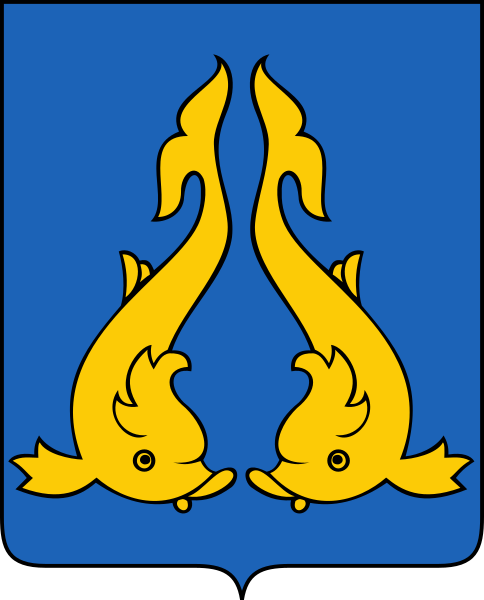
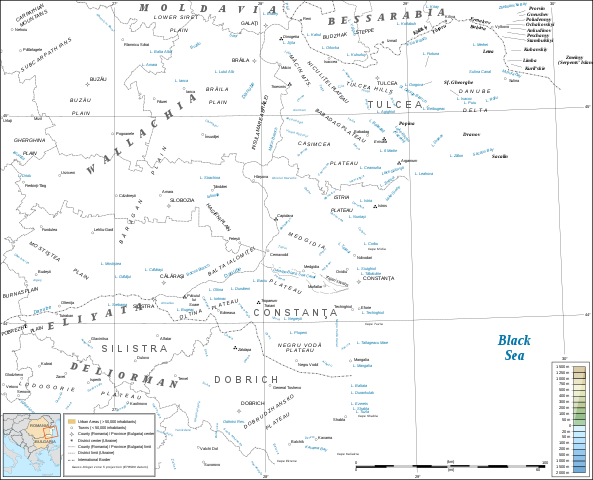
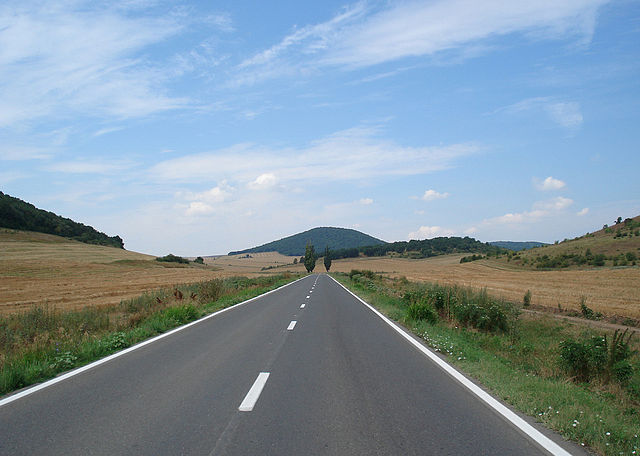
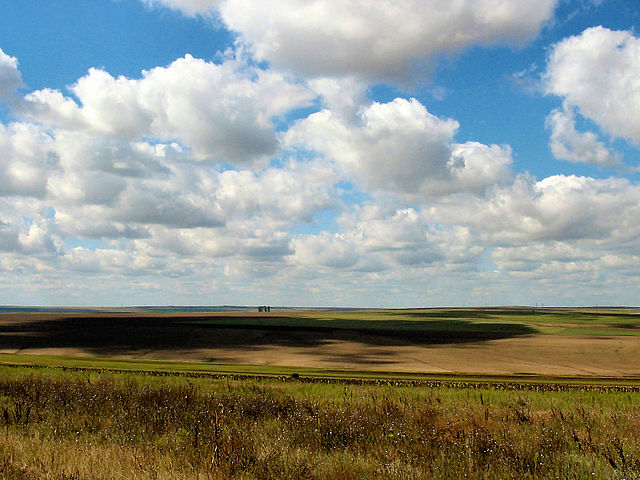
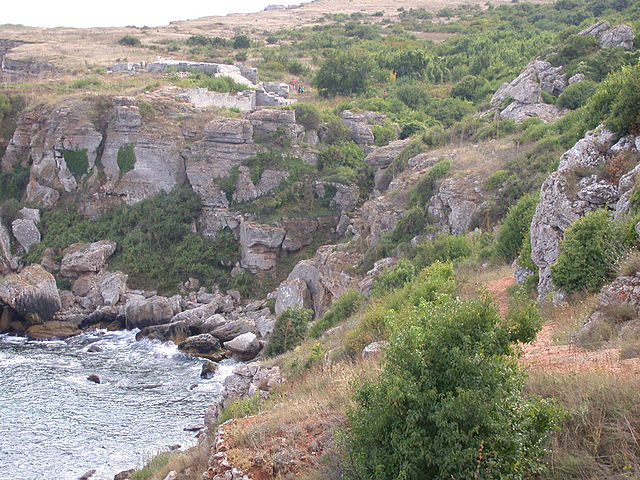
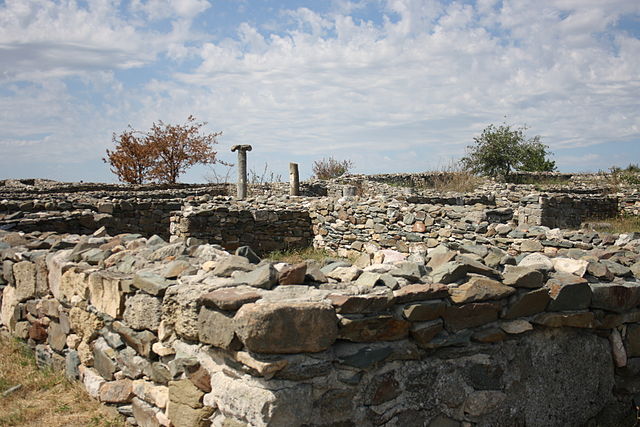
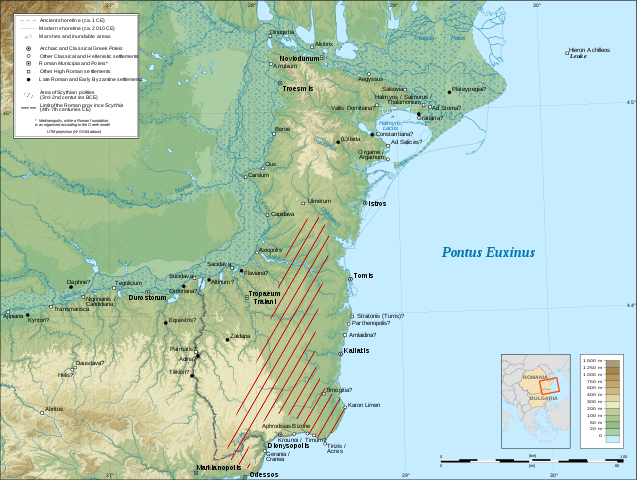


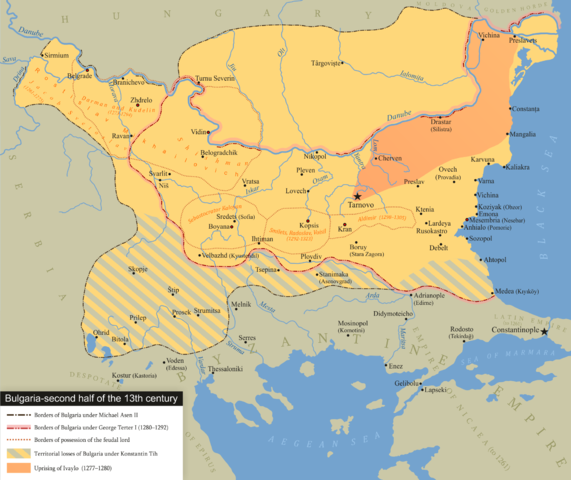
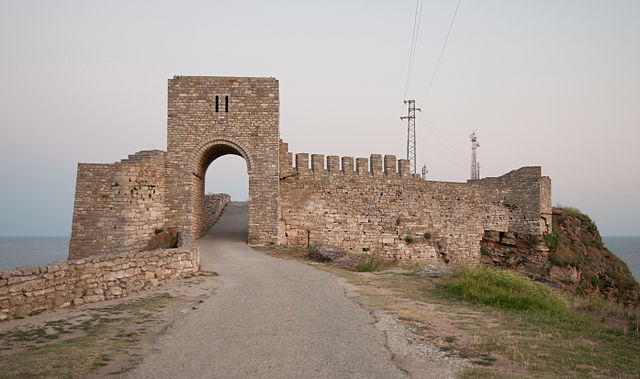
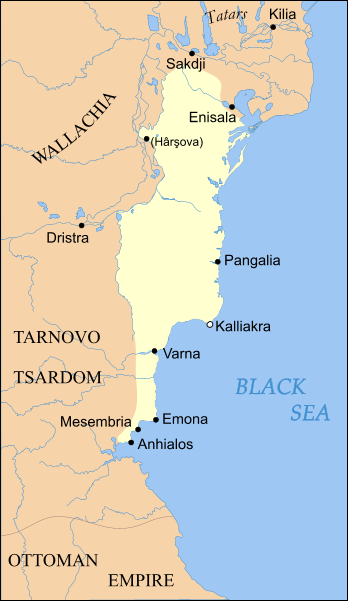



.jpg)
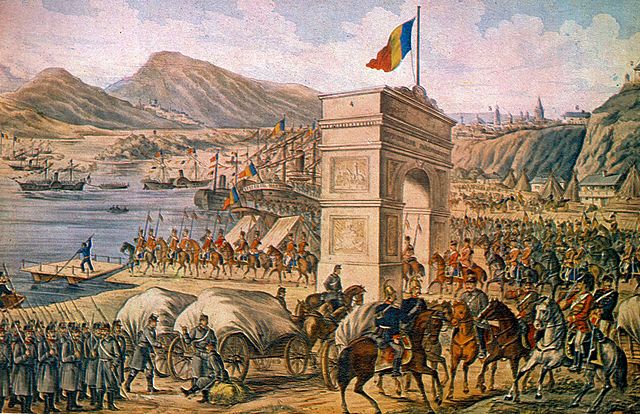

.jpg)



.jpg)
